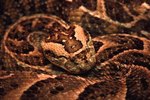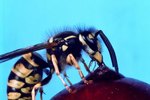
It is extremely rare for complex organisms to evolve into an all-female species, but it can happen. For some species, the involvement of males in the reproductive process is entirely optional. While the males may exist, they are not essential to reproduction. Lots of animals can reproduce without male involvement, from the smallest insects to the biggest reptiles. Asexual reproduction comes in many forms too, from basic cell reproduction to complex cloning cycles.
Self-Fertilizing Sharks
Virgin female hammerhead and blacktip sharks have both been documented as producing young, much to the surprise of the scientific community. Little is known about the process by which these sharks are able to reproduce, but an emerging consensus suggests that sharks are evolving to use parthenogenesis, a process in which female eggs self-fertilize, when populations dip. In both recorded cases, no males were present when the captive female sharks became pregnant.
Budding for Babies
Jellyfish, sea anemones and flatworms all use a process called budding to reproduce. This complex process of reproduction, most commonly associated with strawberries, sees the parent produce cloned cells of itself, which eventually break away and grow into exact replicas of that parent. However, females who use budding as a means of reproduction are also capable of sexual reproduction.
Self-Sexing Insects
Greenflies, stick insects, aphids, water fleas, scorpions, termites and honey bees are all capable of reproducing without males, using parthenogenesis. In the case of the honey bee, the use of parthenogenesis has evolutionary benefits, as they elect to use parthenogenesis when the local population requires more workers, or more queens.
Immaculate Reptile Conception
The boa constrictor, monitor lizard and Komodo dragon are both capable of becoming pregnant without male fertilization, by parthenogenesis. This form of reproduction is not the preferred method and has evolutionary disadvantages for the species, as it constitutes a form of inbreeding that reduces genetic diversity. Whiptail lizards however, have evolved to a point where no males exist. This all-girl species relies entirely on parthenogenesis.
Advanced Avian Parthenogenesis
Chickens and turkeys can use parthenogenesis to fertilize their eggs. However, unlike reptiles, avian parthenogenesis has evolutionary benefits. It is most typically observed in younger hens, who have lower levels of age-related genetic damage and can therefore produce more viable young. Birds also produce nonidentical replicas, so genetic diversity is wider in populations conceived by parthenogenesis.
References
- Science Daily: No Sex Please, We're Female Sharks
- NBC News: Scientists Confirm Shark's Virgin Birth
- Scientific American: How do Jellyfish Reproduce?
- San Francisco State University: Asexual Reproduction
- Library; Thinkquest: Sea Anemones
- BBC Nature: Asexual Reproduction
- University of Wisconsin, Madison: What is Parthenogenesis?
- Oxford Journals: Asexually Produced Cape Honeybee Queens (Apis mellifera capensis) Reproduce Sexually
- Discovery: Boa Constrictor Mom Gives 'Virgin Birth'
- Live Science: Female Komodo Dragon has Virgin Births
Resources
Photo Credits
-
Comstock Images/Stockbyte/Getty Images
Writer Bio
Simon Foden has been a freelance writer and editor since 1999. He began his writing career after graduating with a Bachelors of Arts degree in music from Salford University. He has contributed to and written for various magazines including "K9 Magazine" and "Pet Friendly Magazine." He has also written for Dogmagazine.net.



